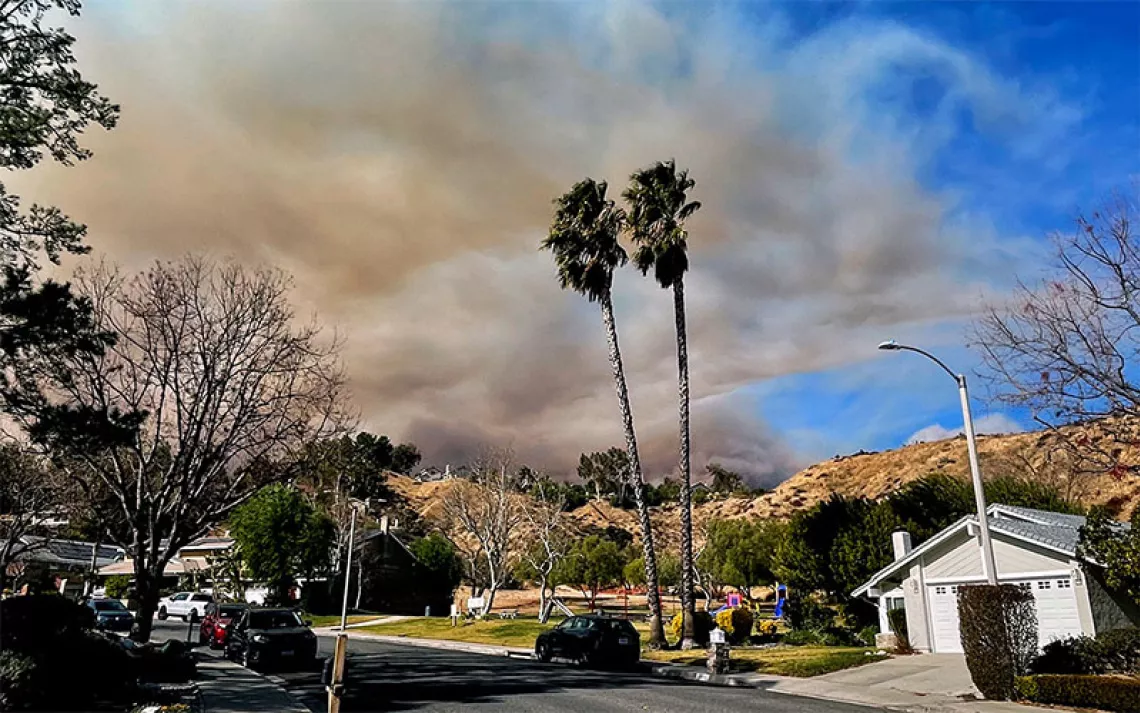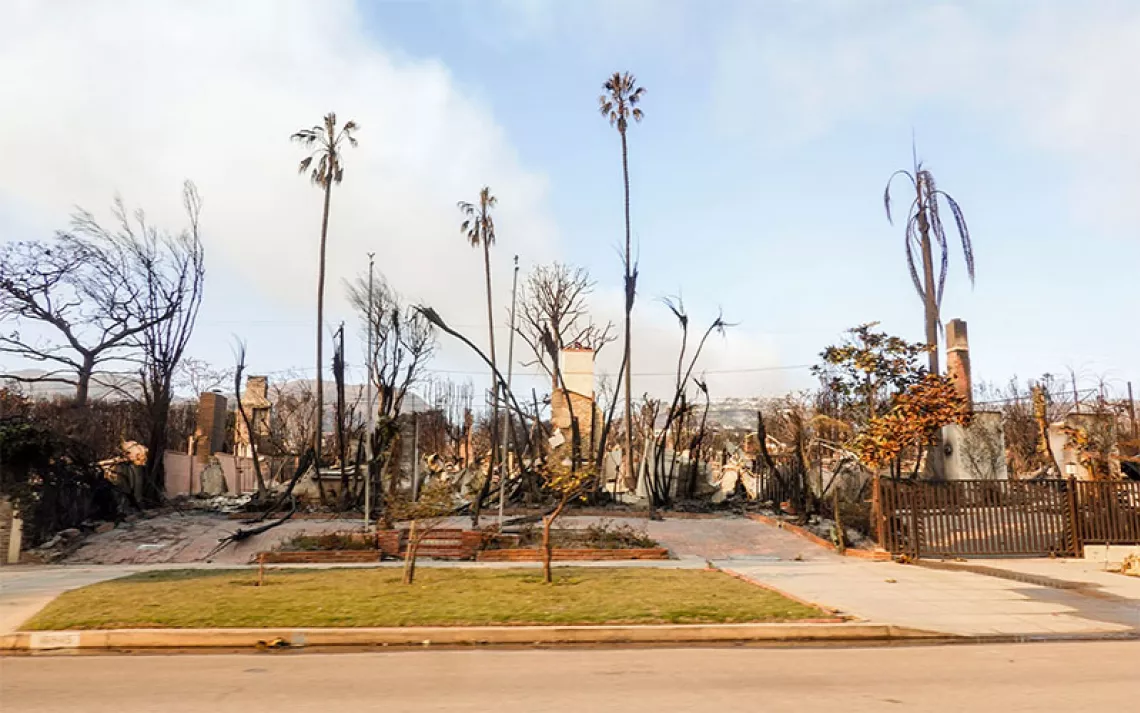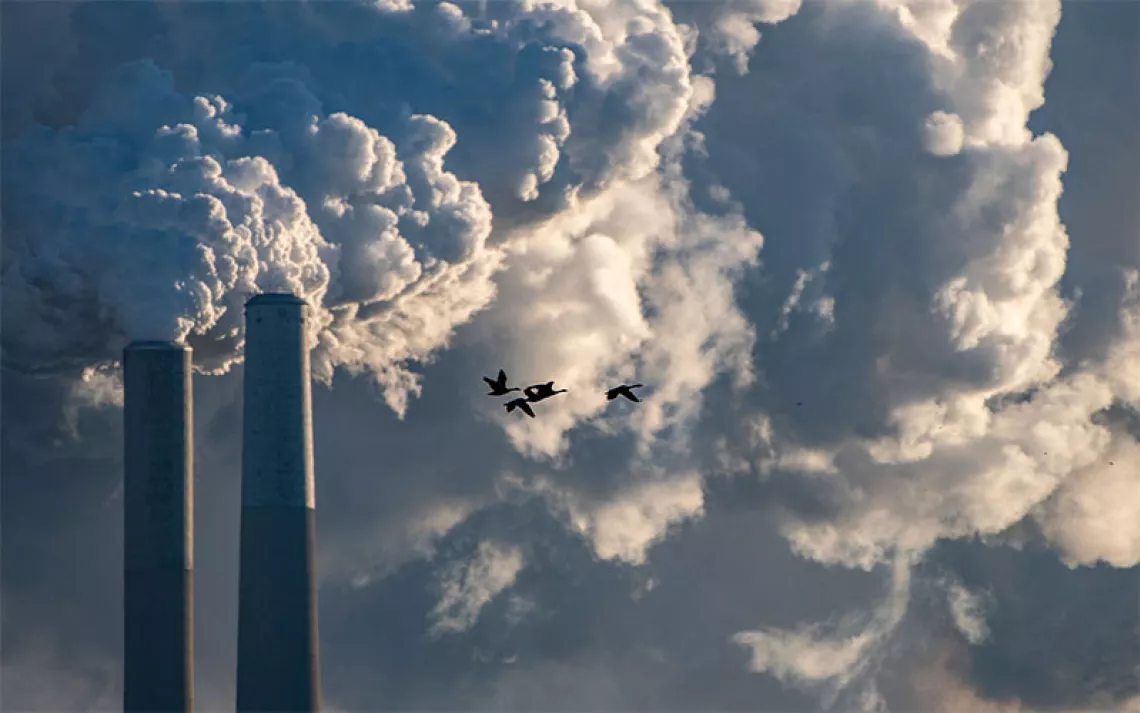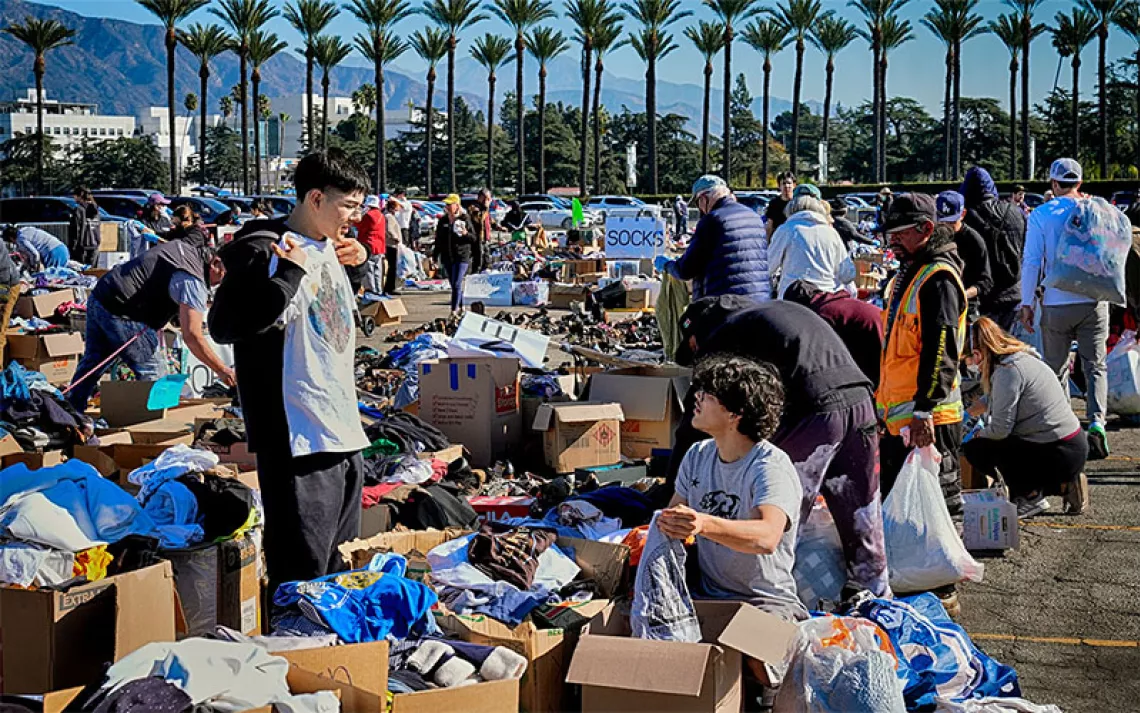The Upcoming UN Climate Talks in Glasgow Are a Make-or-Break Moment
Failure to halt greenhouse gas emissions is not an option—though it’s frighteningly likely

This image provided by NASA shows Hurricane Florence from the International Space Station on September 12, 2018. | Photo by NASA via AP
In early November, government leaders from around the world will meet in Glasgow, Scotland, for the latest round of United Nations–sponsored climate change negotiations. This year’s climate summit—COP26, in UN-speak—will be the most important since the 2015 talks in Paris, and this will be true however the meeting unfolds. If Glasgow is a “success,” this will be taken as a sign that our faltering international institutions might actually, if just barely, be able to spur the planetary mobilization we now desperately need. If it’s a “failure,” well, no such luck—it will become even more difficult to imagine cooperative planetary action, at scale and in time to avoid a truly catastrophic shift in the climate system.
How will we tell if Glasgow is a success? This is a tough question, one that involves judgments about both the geophysical realities of a destabilized Earth and the “realities” of our political systems, which are clearly not up to the challenge. The storms and the firestorms are looming large, and so too is the catastrophe of “vaccine apartheid,” which under Boris Johnson’s government has queued up a summit that does not promise to be either safe or inclusive. Even in the best case, the Glasgow COP is not going to yield anything like a world historic breakthrough. Given that a breakthrough is exactly what we need, how can we ever hope to judge the UN talks as even a measured success? By attending to key details. Keep in mind that, six years after Paris, plenty of people in the climate movement still can’t say “Paris” without saying “failure,” and this despite the obvious fact that, had the Paris Agreement not been completed before Donald Trump’s election, we would now be in even more terrifying straits.
But what if, when we say “Glasgow success,” we mean not a historic breakthrough but just a proper reboot of the climate negotiations? Such a reboot would include meaningful new pledges of national action, some sort of significant leap forward on international climate finance, and a negotiations plan that explicitly sets the stage for further progress at COP27, the African COP that will take place in 2022, and the “Global Stocktake” that will follow in 2023.
Such a reboot could actually happen. The Chinese government has already announced an end to international coal financing, and other large announcements could drop soon. It’s not impossible to imagine a future in which “Glasgow” comes to connote a new seriousness and a pivot to a new round of international negotiations that can actually be taken seriously.
Is such a new seriousness possible? It is, and though this may sound odd, this may be because these last few years have been so challenging. In them we have seen the rise, almost everywhere, of anti-democratic movements of sometimes astonishing venality—and we’ve also seen illusions falling away. We have experienced the pandemic and also the catastrophically botched vaccine rollout, but also the widespread realization that international cooperation is becoming an existential imperative. We have seen the new IPCC report, which told us exactly what time it is. And all of this has crystalized the awareness, now clear and widespread, that despite all the possibilities of the renewables revolution, renewables alone won’t save us, not unless they are joined with a well-planned, justice-forward push for a global transformation that, as the IPCC clearly told us back in 2018, would have “no historical precedent.”
*
To know if Glasgow is even a measured success, start with the realization that there is virtually no functioning global governance on this planet. The startlingly inadequacy of the Paris Agreement reflects this dismal reality. But the Paris Agreement wasn’t crafted by fools. It was designed to be adopted, and it was. It was also designed to be strengthened, and strengthened again, in periodic five-year intervals defined by endless, dispiriting political maneuvers, citizen-movement outrage, weary cynicism, exhausted cooperation, and, always, hope. The reason COP26 is a “make or break” moment is that it’s time now to attend to the strengthening. It’s time to turn the ambition ratchet.
Here’s what that means:
We need much stronger national pledges of action, and they will have to be honest ones.
I’ve long thought that, when it finally became obvious we’re not going to avoid overshooting a 2.7°F rise in global temperatures (or 1.5°C), there would be a political crisis. We’ll find out soon enough. The IPCC says that “in almost all” its emissions scenarios we’re going to cross the 1.5°C line “in the early 2030s.” Only in the very best case—50 percent cuts in global emissions by 2030, then on to what I call “honest net zero” by the 2050s—will the warming then come to a relatively rapid halt.
The good news, such as it is, is that if and when we reach honest net zero, the warming will actually plateau. This is a pretty amazing fact, and while it’s gotten a bit of press, it deserves much more. There may indeed be “tipping cascades” on the horizon, but it’s still physically possible to eddy out before we reach them. The question is if it’s also politically possible.
The opening round of national pledges, tabled in Paris in 2015, don’t take us anywhere near 50 percent cuts by 2050. In fact, they imply a planetary warming of about 5.4°F (or 3°C) by the end of this century, which would be entirely catastrophic. According to the UN’s September “synthesis report,” the current pledges have us on a trajectory that’s only marginally better: a global temperature increase of 4.9°F (or 2.7°C) by 2100. This is why it’s crucial that the Glasgow pledges be strong enough to support an honest net zero 2050 emissions pathway, and that those pledges be believable.
John Kerry, America’s international climate envoy, was absolutely right to say that the stakes are “unfathomable,” and equally right to say that success cannot come without real action from China, Russia, India, South Africa, Brazil, and “a host of countries.” Alas, such success also demands far more international climate finance, and here the US has not stepped so eagerly to the plate. To be fair, President Biden has vowed to increase the US climate finance pledge to $11.4 billion annually, but this number was calculated within the cramped equations of American domestic politics and has no relation whatsoever with either the global need or the US fair share. The new pledge from the Philippines well exemplifies the problem. The Philippines aims to sharply reduce national emissions, but only about 3 percent of this reduction is “unconditional.” The rest—in sectors from farming to energy to industry to transport—will require financial support from wealthier countries.
There’s still time to avoid an unmanageable future. This won’t be true forever, but it’s still true today, and this counts for a great deal. So keep your eyes open. Attend to the finance pledges of the rich countries and the “conditional” pledges of the poor ones. Attend, in particular, to the implied collective ambition—what will global emissions be in 2030? Focus, too, on the claims countries make for the fairness of their pledges. They all know, at this point, that they have to say something about fairness, though most countries are still trying to avoid honest reckonings with their fair shares.
There is no path to climate stabilization without international public climate finance, and lots of it.
Climate stabilization has everything to do with economic justice. Why? Because the majority of the world’s emissions now come from the so-called Global South, and thus, by definition, most of the work of planetary decarbonization must happen there as well. The problem is that, in sharp contrast to its emissions, most of the world’s wealth is still in the Global North. This is the key thing, and it means that the great decarbonization is simply not going to happen in time unless the rich world helps the poor one along by providing a great deal of financial and technological support.
This is going to be a long story, one that will extend far beyond the $100 billion in annual climate transition support that was first promised back in Copenhagen in 2009. But its simplest takeaway is that wealthy countries like the United States cannot do their fair share solely within their own borders. Rather, their domestic actions must be supplemented by support for even more action in poorer countries. Unless that happens, the net zero 2050 push is doomed.
This isn’t exactly a secret. The elites know full well that a great deal of capital will have to be reallocated if the climate is to be stabilized, but for the most part, they plan to attack the problem by redirecting private capital flows—as opposed to government monies. Within the negotiations, this comes down as a tension between the partisans of Paris’s Article 9.3 (in which developing countries “take the lead in mobilizing climate finance from a wide variety of sources, instruments, and channels”) and Article 2.1(c) (in which the spotlight is on “making financial flows consistent” with the demands of the larger transition).
That’s all very technical. The plain English issue here is international public “climate finance,” and how much of it will be provided, and by whom, and how. Not that redirecting private “financial flows” isn’t also going to be fundamental. We live within capitalism, after all. But we have to stop pretending that public finance deserves only a small, secondary role. Especially today in 2021, the need here should be obvious, given the vast public funds that had to be mobilized to stabilize our COVID-shattered economy.
We have to face the Loss and Damage challenge that lies beyond the limits of “adaptation.”
In the beginning—meaning, oh, a scant 30 years ago—there was the dream of easy “mitigation”: If only we could get the prices right, technological revolution would bring down greenhouse gas emissions and solve the climate problem. Then came the recognition that “adaptation”—building sea walls, embracing agroecology, abandoning consumerism—would be necessary as well. Today, it’s generally agreed that half of all public climate finance—like that disbursed by the UN’s Green Climate Fund—should go to adaptation.
But what happens when your whole island goes under? Or if, year upon year, the encroaching sand from desertification takes your crops? What happens when you and your family can no longer survive at home and are compelled, with hope or without, to set out across the borders? The issue here, officially known as “Loss and Damage,” is the one you face when adaptation is no longer possible. Loss and Damage puts a name to an almost boundless challenge (huge regions of the planet will at some point be virtually uninhabitable) and poses questions of liability and compensation that point far beyond the capacities of governance as usual.
This, too, is a long story. The United States, in particular, lobbied hard to include a Loss and Damage liability waiver in the Paris decision text, though this hardly settled the matter. A long and deeply committed campaign led by the Global South (both diplomats and activists) managed to keep Loss and Damage on the UN negotiating agenda, and indeed to establish it as a defining issue, crucial to the legitimacy of the entire negotiating process.
The real issue here is life and death. This is true in America, a rich country that is being harrowed by climate-amplified disasters, but it is even more true in poor and relatively innocent parts of the world, where such disasters threaten to overwhelm and destroy entire societies. It’s no surprise, then, to find that action on Loss and Damage has become a planetary litmus test, one that clearly identifies the people who are willing to face the moral realities of the coming world and to struggle with their consequences.
Obviously, I don’t know how this story ends. I do know that, without robust and sustained international cooperation, it will not be possible to stabilize the climate system. Such cooperation will not be possible unless we face the Loss and Damage challenge, and I would like to believe that we will.
*
With the American West on fire, the East being battered by new kinds of storms, and the expanses of our country being torn asunder by the new Right, it would be insane to argue that the international crisis should, or even could, trump the domestic one. Still. International solidarity is a non-negotiable presupposition of any realist path forward, and when it comes time to discuss the climate negotiations, it can no longer be set aside for later consideration. It’s far too late to think solely in national terms.
As for these three issues, I don’t pretend that they capture the entire Glasgow agenda. When taken together, however, they spotlight the equity challenge that is and has always been at the heart of the international climate reckoning. The pandemic, perhaps oddly, has made this easier to understand. Climate mobilization means effort sharing and technology cooperation on an unprecedented scale, but so does international public health in the face of a deadly, rapidly mutating viral adversary.
Many of the diplomats now fighting to animate the climate negotiations are fully aware of the stakes. António Guterres, the UN Secretary-General, called the IPCC’s new assessment report “Code Red for mankind.” This was not empty rhetoric. Nor is it a surprise. Our conditions of existence are now well known. The question is what are we going to do about them.
 The Magazine of The Sierra Club
The Magazine of The Sierra Club



